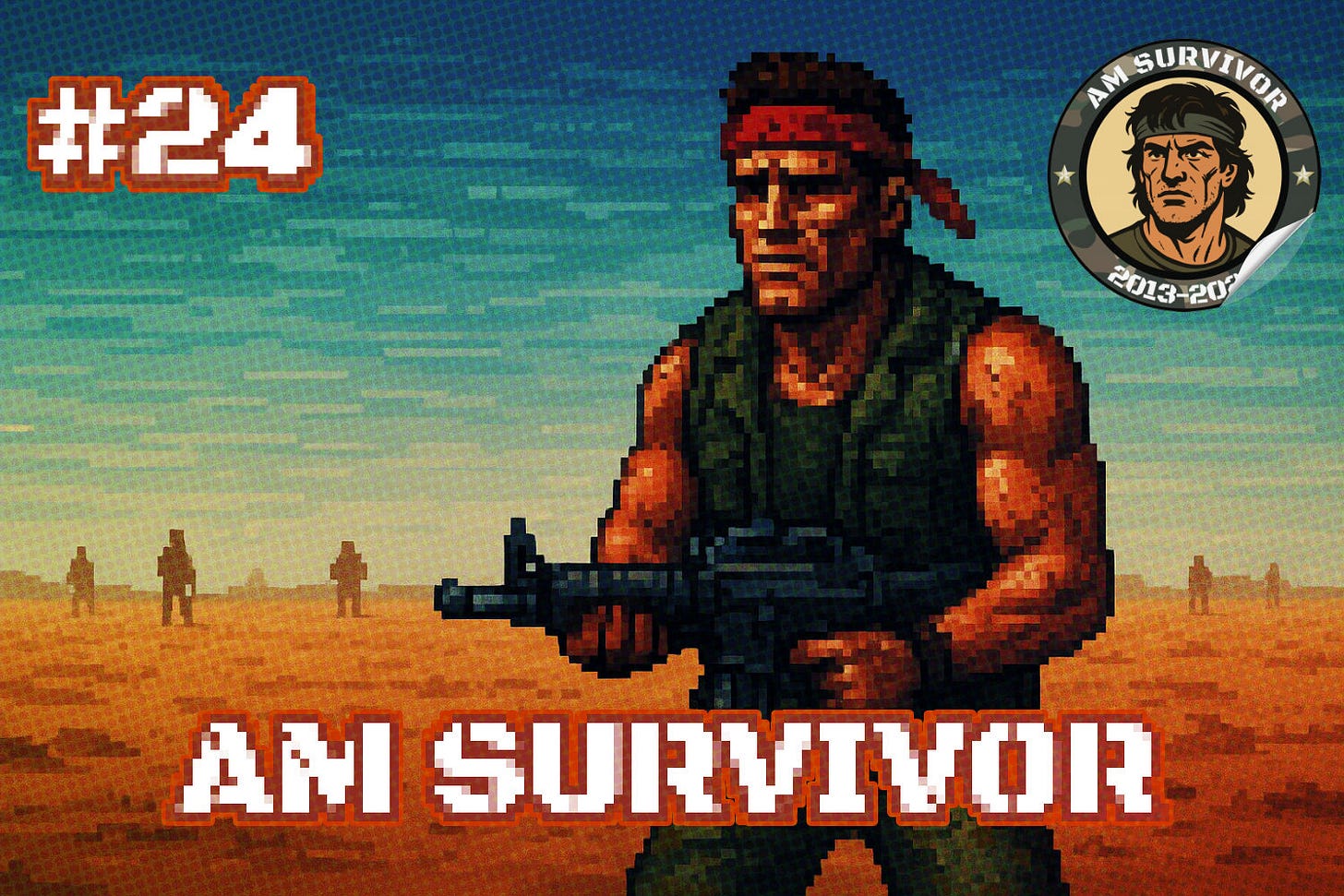When the founder’s vision disconnects from market reality
AM Survivor #24
The departure of a founder from their own company is one of the most difficult moments in an entrepreneur’s life.
Especially when it’s not about burnout, financial failure, or internal conflict, but about a deeper clash between vision and market reality.
Just a week ago, I wrote about the story of Israeli startup Castor, which shut down after exhausting the potential of the business model that had driven its growth strategy.
This one is similar, yet slightly different. What happens when the original business model proves limited - and the strategic pivot simply doesn’t inspire you anymore?
The story of Fedor Antonov, co-founder of Anisoprint, is a vivid example of such a moment - when the market forces a strategic shift, and the founder must ask himself: does he still want to go in the direction he once chose, or follow a new one that doesn’t align with his beliefs?
Anisoprint was founded a decade ago in Russia with the ambition to create a new standard in composite 3D printing. Antonov and his team developed a method called Composite Fiber Co-extrusion (CFC), which enabled 3D printing of polymer parts reinforced with continuous carbon fiber.
In essence, it was an alternative - and more affordable - version of the method being developed by Markforged.
The company quickly attracted attention from both scientific and industrial communities, but for political reasons soon left Russia, which has become a challenging environment for scaling an international business. In 2021, Anisoprint moved its headquarters to Luxembourg, and a year later, it opened a research center in Germany.
In 2022, a decision was made that, in hindsight, turned out to be a turning point: relocating Anisoprint’s main headquarters to China. Antonov, taking on the role of CTO, was to focus on further technological development, while the new CEO, Ryan Liu, would handle the market and business side.
Over time, however, the market began to shift in a different direction.
The data that Antonov himself now cites speaks volumes: industrial machine sales dropped by 20%, while the consumer segment grew by 20% year over year.
Chinese manufacturers began to dominate almost every niche, offering increasingly advanced devices at significantly lower prices.
Anisoprint’s main competitor, Markforged, faced serious financial difficulties, which led to the surprising decision to sell the company to Nano Dimension. Now part of the Israeli firm, Markforged’s future remains uncertain - though it has regained financial stability.
In this context, a change of strategy seemed inevitable. Liu saw an opportunity where Antonov saw the risk of diluting the company’s original idea - specifically, in the consumer segment.
This is how a new brand, FibreSeek, was born - built on Anisoprint’s technology, but aimed no longer at industry, rather at a wider market of individual users.
For Antonov, that was the breaking point. He decided to step down.
At this juncture, a universal question arises: what should one do when the market forces a change of direction that conflicts with one’s vision? Should you stick to your original idea, risking a loss of position and growth momentum, or adapt to the trends that may bring rapid success - but at the cost of your project’s identity?
In theory, the answer seems simple - you have to be flexible and follow where the customers are. In practice, however, for many founders this becomes the most emotionally challenging moment of their careers.
The company they built with passion and purpose transforms into something different - more a product of the market than of their own imagination.
Antonov chose to take a step back. He didn’t leave Anisoprint entirely - he stayed on as an advisor, maintaining some influence over the company’s technological direction while handing over control to those who believe in the new strategy.
In the startup world, perseverance and visionary thinking are often glorified, but it’s rarely acknowledged that sometimes the greatest act of courage is stepping away when you feel the path ahead no longer feels like your own.
The story of Anisoprint and FibreSeek also reflects a broader trend - the evolution of the entire 3D printing industry.
Initially, it was the domain of enthusiasts and engineers dreaming of democratizing manufacturing. Over time, the market bifurcated: on one side, industrial solutions matured; on the other, a massive hobbyist and prosumer segment emerged.
As the technology became more accessible, and the gap in quality between “desktop” and “factory” machines began to narrow, many companies faced the same dilemma. Should they continue to develop specialized solutions for niche industrial clients, or pivot toward the mass market that offers scale and financial stability?
Antonov chose the former - to remain true to his vision of industrial composite printing, even if that meant losing control over the brand he had created.
In a world where everyone speaks of “pivots” and “agility,” it’s easy to forget that adaptation doesn’t always mean abandoning one’s convictions. Sometimes you have to let others continue the journey in a new direction - so that you can preserve the essence of what you started.




